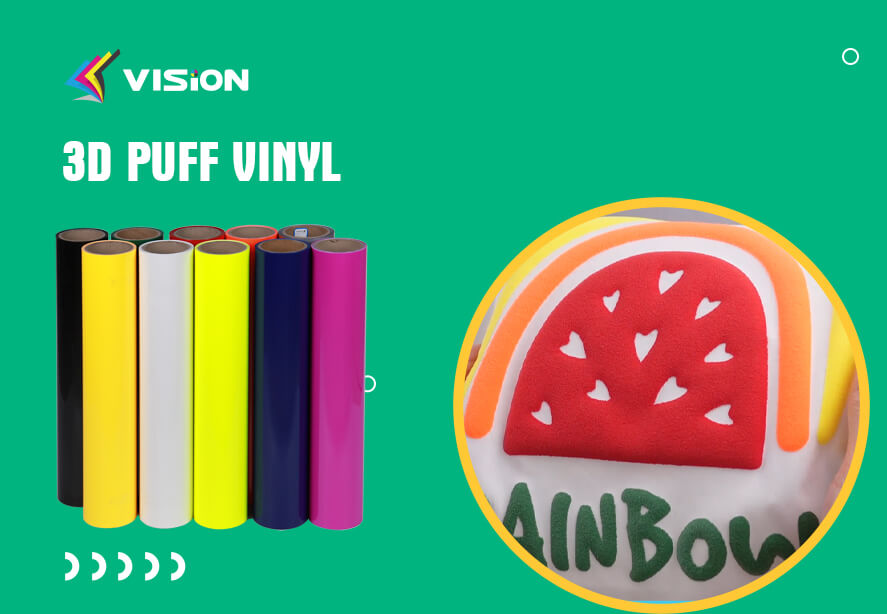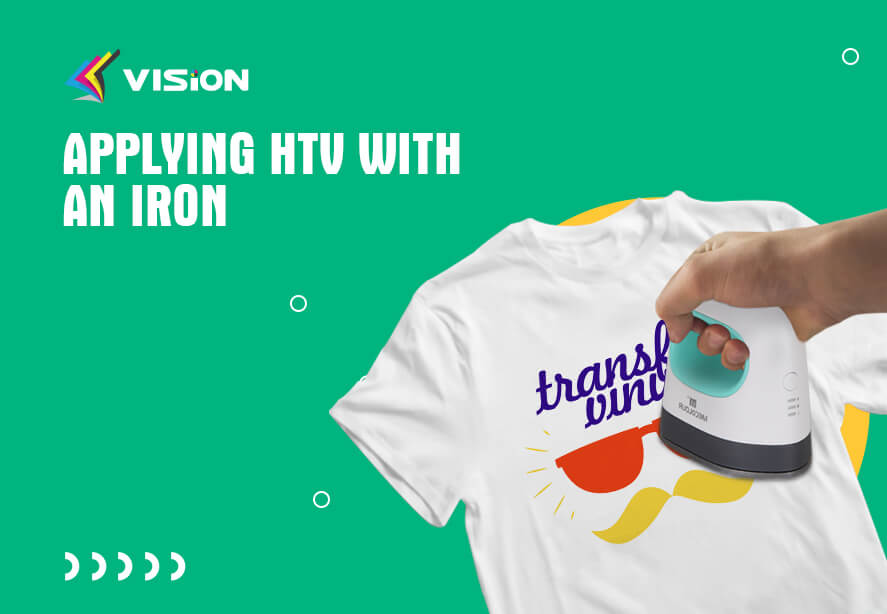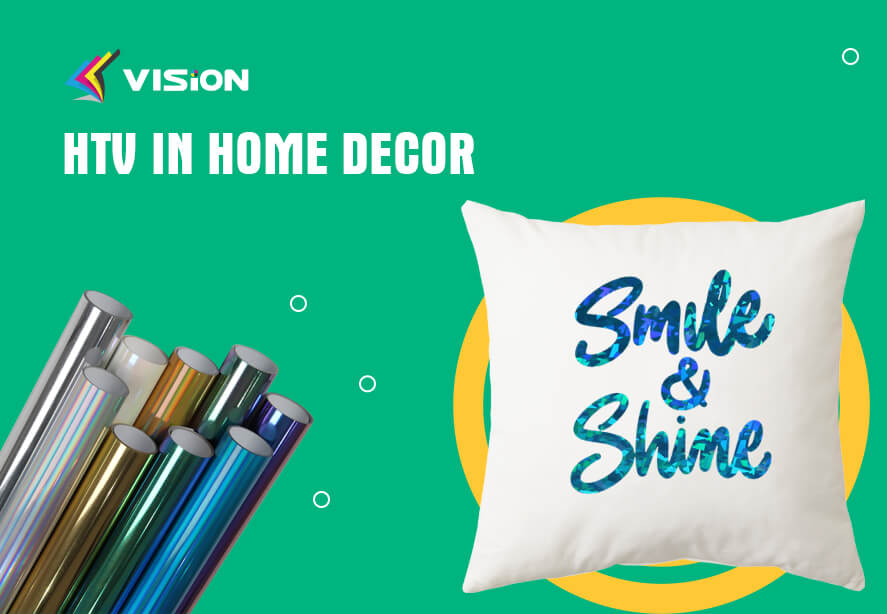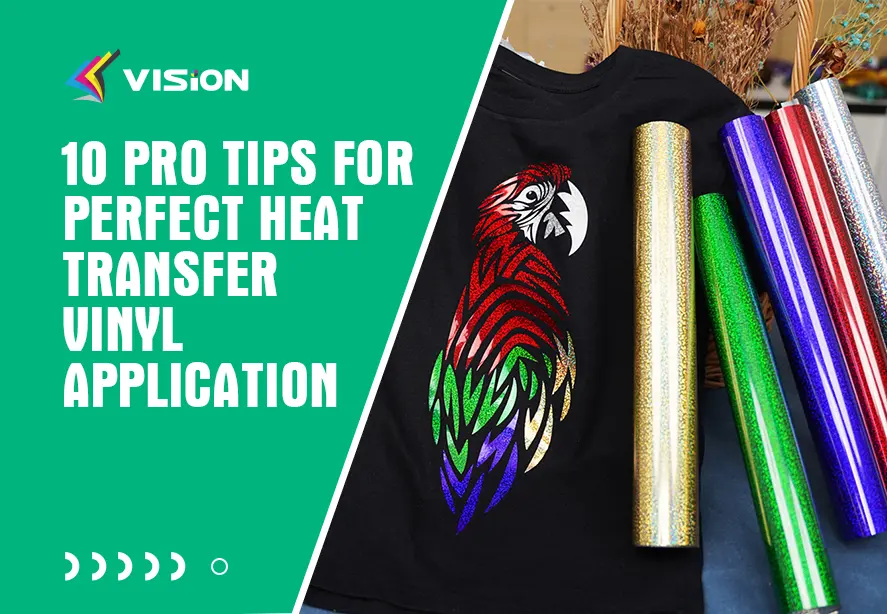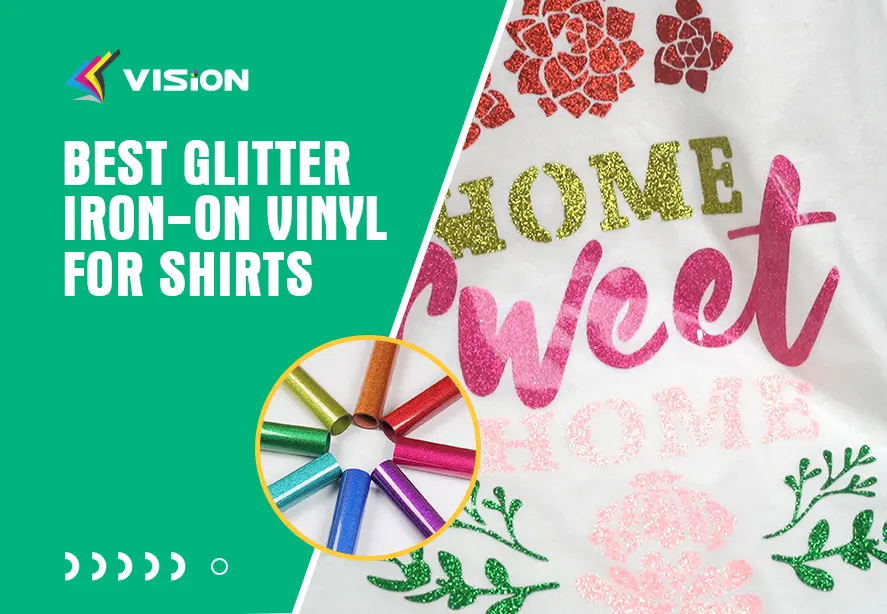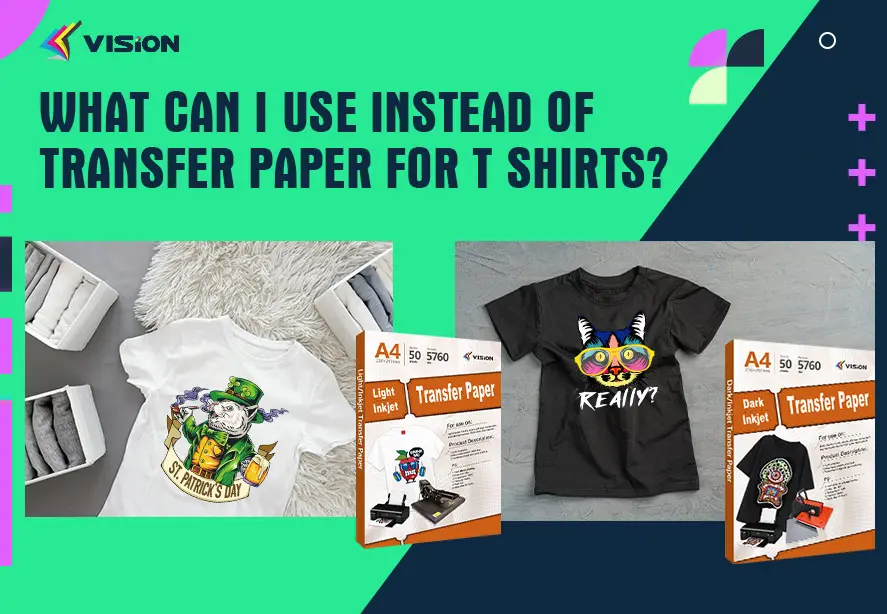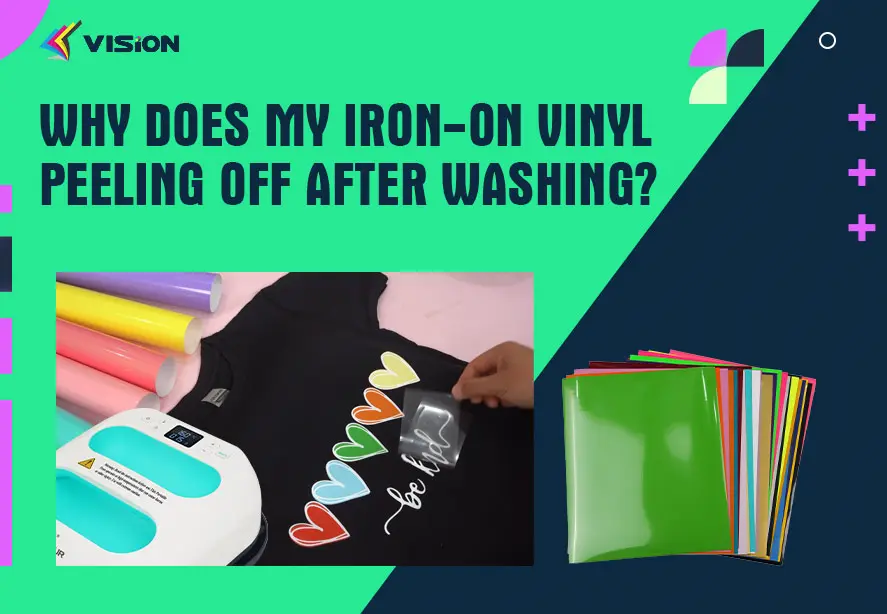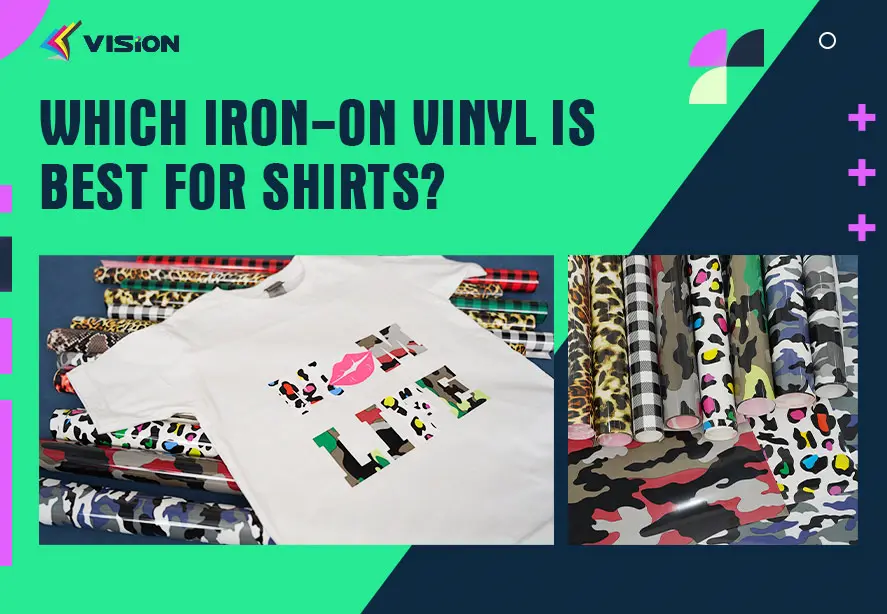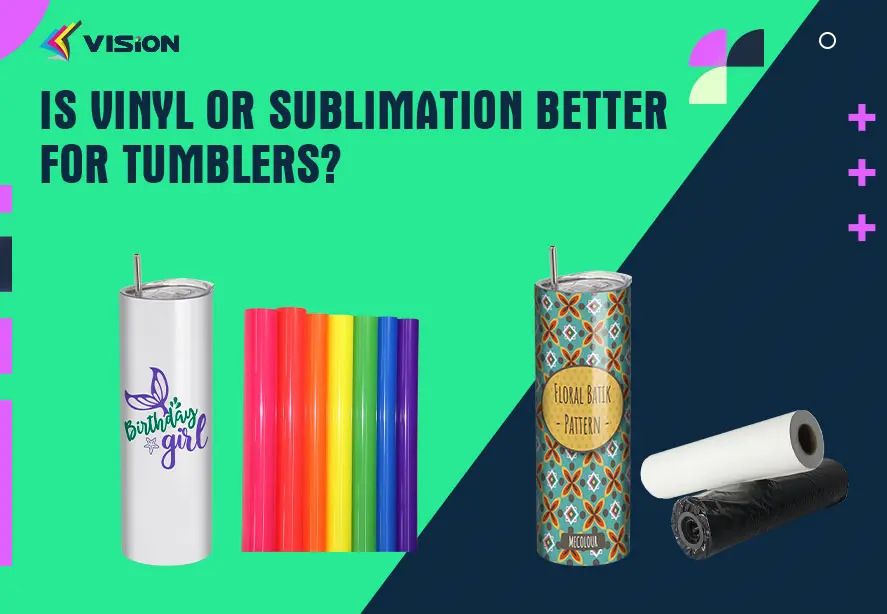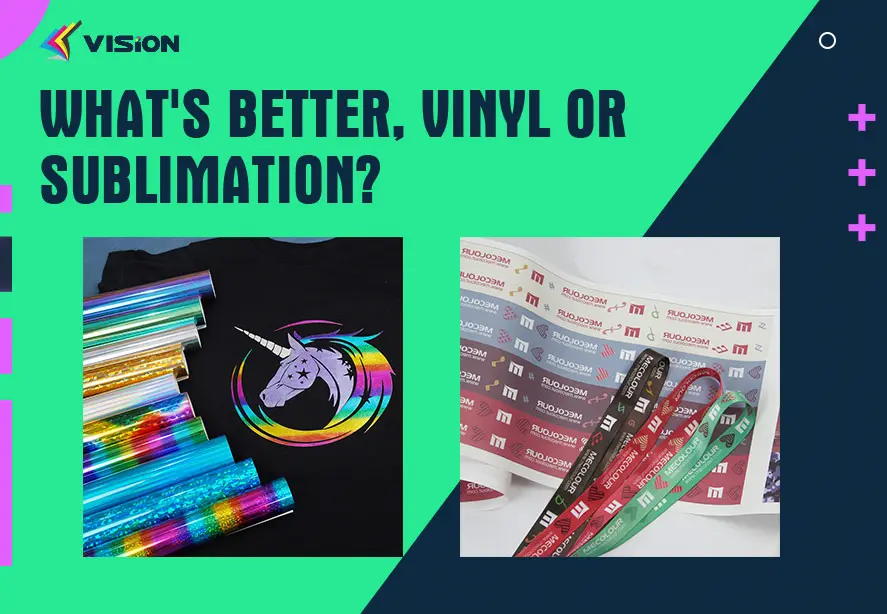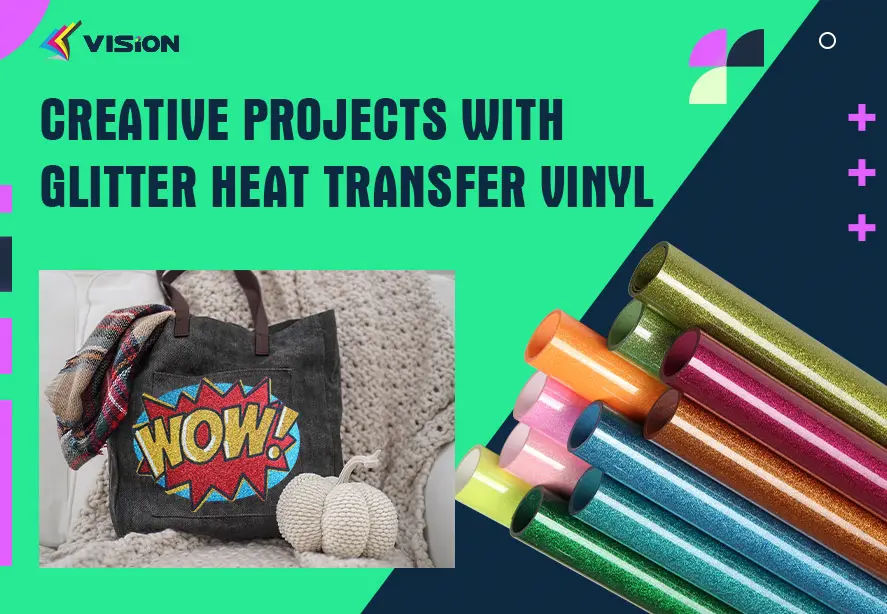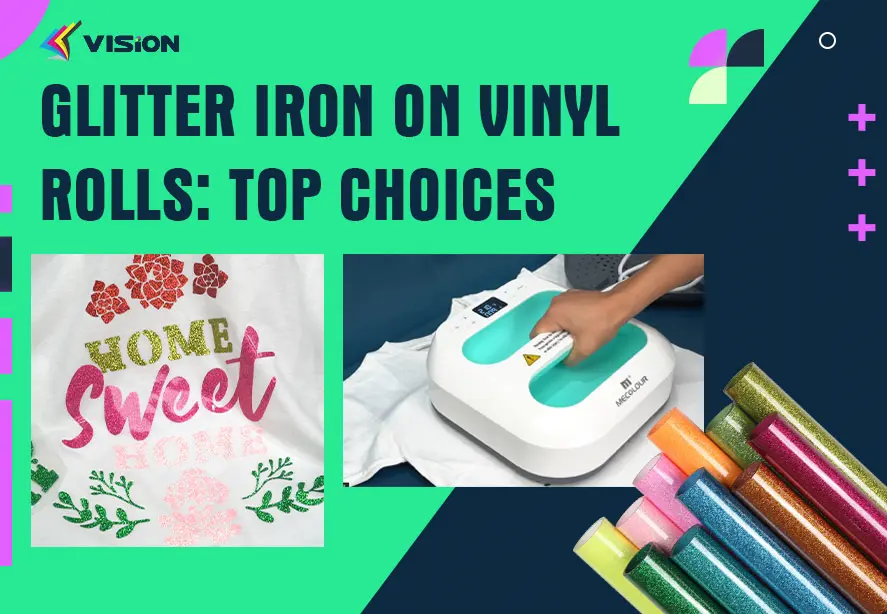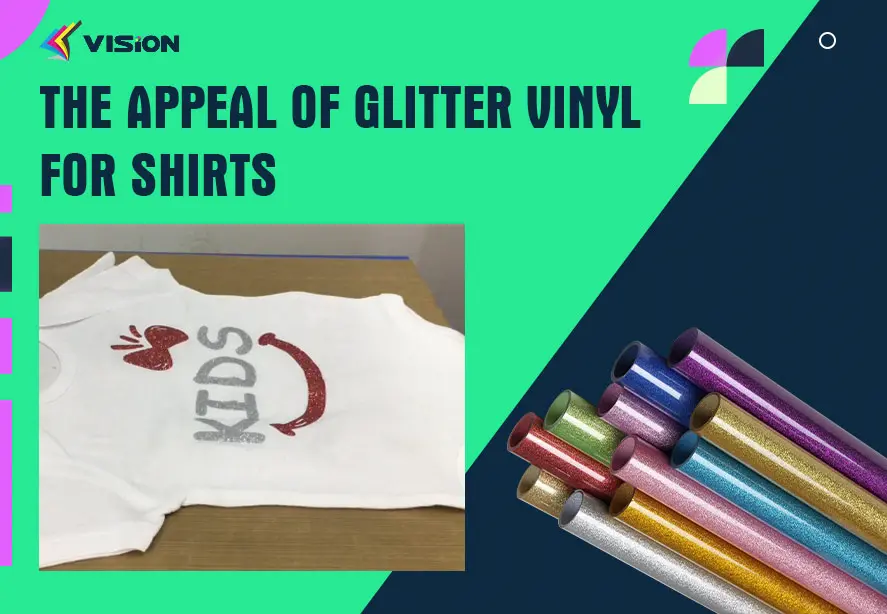HTV Tips & Tricks: Your Fashion Secret Guide
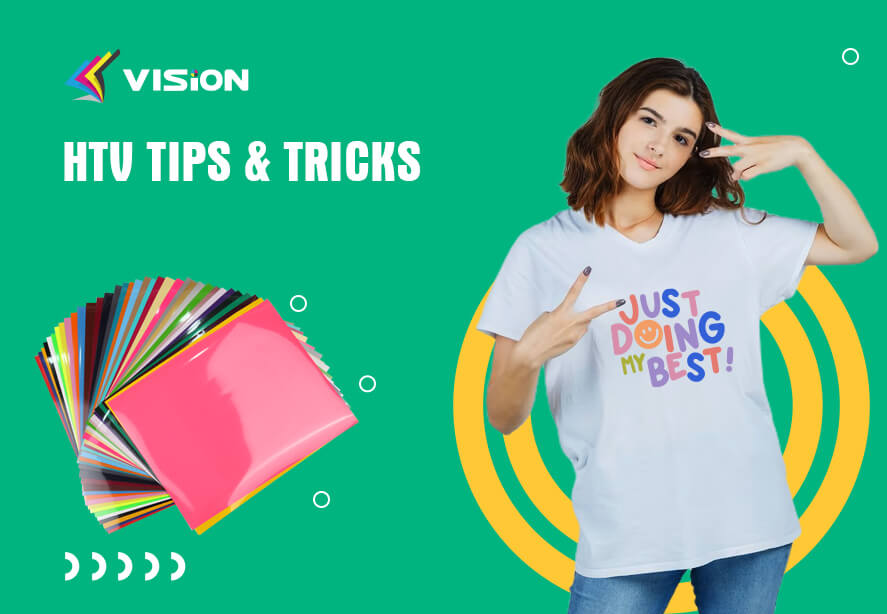
In the world of DIY fashion, heat transfer vinyl (HTV) has revolutionized the way we customize and create our clothing and accessories. Whether you’re a seasoned crafter or just starting, HTV offers endless possibilities for expressing your unique style. In this article, we’ll dive into the world of HTV and explore tips and tricks to help you master this art and elevate your fashion game.
If you are an expert who has been in the inkjet printing industry for many years, you should be familiar with heat transfer vinyl, there are many heat transfer vinyl factories on the global market. Each supplier produces different products,so let introduce VISION’s heat transfer vinyls.
Understanding the Different Types of HTV
Not all HTV is created equal, and knowing the different types available will enhance your crafting experience. Let’s explore four popular types:
PU HTV
PU Heat Transfer Vinyl, made from polyurethane, is known for its softness and lightweight feel on fabrics. It is easy to weed, durable, and stretchable, making it versatile for various fabric applications.
Glitter HTV
If you want to add a touch of sparkle and glam to your designs, glitter HTV is the perfect choice. It comes in various shimmering colors and adds a fun and eye-catching element to your creations.
Flocked HTV
Flocked HTV creates a soft and velvety texture, adding dimension to your designs. It is ideal for creating a tactile and appealing surface on fabrics.
3D Puff Vinyl
3D Puff HTV provides a raised, three-dimensional effect to your designs, giving them an embossed appearance. It adds depth and texture to your creations, making them stand out.
Choosing the Right Fabric for HTV
Selecting the appropriate fabric is crucial for successful HTV application. Certain fabrics may not withstand the heat or might not adhere well to HTV. Here are some fabric considerations:
Cotton: Ideal for HTV and offers excellent adhesion.
Polyester: Works well with HTV due to its synthetic fibers.
Cotton-Poly Blends: Generally suitable, but testing is recommended.
Preparing Your Design
Before diving into the application process, you need to prepare your design. Follow these steps for a seamless experience:
Design Software
Use design software to create or customize your artwork. Popular software like Adobe Illustrator or Cricut Design Space allows you to unleash your creativity.
Cutting Your Design
Once your design is ready, use a cutting machine like a Cricut or Silhouette to cut the HTV precisely. Be sure to mirror the design before cutting.
Applying HTV with an Iron
If you don’t have a heat press, using a household iron can still yield great results. Follow this step-by-step guide for iron application:
Place the fabric on a flat, heat-resistant surface.
Position your HTV design with the plastic carrier sheet facing up.
Set your iron to the recommended temperature (refer to the HTV manufacturer’s instructions).
Apply firm pressure and move the iron back and forth for even heat distribution.
Let it cool before peeling off the carrier sheet.
Heat Press Application
Investing in a heat press can level up your HTV game. Here’s how to use it effectively:
Set the heat press to the appropriate temperature and pressure for your HTV and fabric.
Preheat the fabric for a few seconds to eliminate wrinkles and moisture.
Place your HTV design on the fabric with the carrier sheet facing up.
Close the heat press and apply even pressure for the recommended time.
Peel off the carrier sheet after the fabric cools down(about the peeling method, refer to the HTV manufacturer’s instructions).
How To Use 3D Puff Heat Transfer Vinyl With Cricut Maker3?
HTV Layering Techniques
Layering HTV allows you to create intricate and multicolored designs. Remember to follow these guidelines:
Start with the base layer and gradually add the top layers.
Use a heat-resistant cover sheet to prevent scorching or melting previous layers.
If are interested in learning more heat transfer vinyl layering techniques, please watch our youtube video about layer flock heat transfer vinyl.
Caring for HTV Apparel
To ensure longevity, proper care for your HTV apparel is essential. Follow these tips:
Wash garments inside out to protect the HTV.
Use a mild detergent and avoid bleach or harsh chemicals.
Hang dry or use a low-heat setting in the dryer.
Troubleshooting Common Issues
Even the pros encounter challenges. Here are some common HTV issues and how to troubleshoot them:
Bubbling
Bubbles may form during the application process. To avoid this, use a heat press or iron with consistent pressure.
Peeling
If the HTV starts peeling, it could be due to inadequate heat or pressure during application. Repeat the process with increased pressure.
Uneven Application
Inconsistent pressure or temperature can result in an uneven HTV application. Ensure your equipment is working correctly.
Innovative HTV Applications
Think outside the box and experiment with these creative HTV applications:
Foil HTV
Foil HTV adds a shiny metallic finish to your designs, making them stand out.
Reflective HTV
For safety or fashion purposes, reflective HTV enhances visibility in low light conditions.
Creating Multi-Color Designs
Achieve eye-catching designs by combining different HTV colors. Plan your design carefully for stunning results.
Personalizing Accessories with HTV
Extend your creativity beyond clothing by personalizing accessories like tote bags, hats, and shoes.
Incorporating HTV in Home Decor
Elevate your living space with HTV-adorned home decor items like pillows, cushions, and wall art.
HTV opens up a world of creative possibilities, allowing you to transform basic apparel and accessories into personalized masterpieces. By understanding the different types of HTV vinyls, mastering the application techniques, and exploring innovative ideas, you can take your DIY fashion to the next level.
Related:
Heat Up Your Designs with PU Heat Transfer Vinyl
26 Trendy Designs for Heat Transfer Vinyl
FAQs
Yes, an iron can be used, but a heat press provides more consistent results and is recommended for professional-looking outcomes.
Absolutely! Layering different HTV types can result in unique and visually stunning designs.
Yes, mirroring your design is crucial for proper alignment when applying HTV.
If you make a mistake, you can use a heat gun or a household iron to gently heat and peel off the HTV.
Yes, there are HTV types specifically designed for dark fabrics, ensuring excellent visibility and adhesion.


